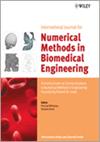Thermal and mechanical numerical modelling of electric discharge machining process
引用次数: 28
Abstract
In electric discharge machining (EDM), the heat gradients caused by the electric discharge create a non-uniform local thermal expansion on the level of the surface layers of machined materials from where genesis of thermal stresses takes place. These thermal stresses, if exceeding yield stress, can remain and become residual after the cooling of the part. The modelling of these phenomena, during the heating by the electric discharge and the cooling by the dielectric liquid, requires a heat transfer model, the material behaviour identification, a thermo-mechanical model for the thermal and the residual stress models. This paper presents numerical results concerning the temperature distribution, the thermal and residual stresses of a stable steel material (AISI316L) machined by EDM. Comparison of numerical results with experimental data and numerical results from the literature shows good agreement and is hence quite satisfactory. Copyright © 2008 John Wiley & Sons, Ltd.电火花加工过程的热力学数值模拟
在电火花加工(EDM)中,由放电引起的热梯度在被加工材料的表面层水平上产生不均匀的局部热膨胀,从这里产生热应力。这些热应力,如果超过屈服应力,可以保留,并成为残余冷却后的部分。在放电加热和介质液体冷却过程中,这些现象的建模需要一个传热模型、材料行为识别、热应力模型和残余应力模型的热力学模型。本文给出了稳定钢(AISI316L)电火花加工的温度分布、热应力和残余应力的数值计算结果。数值计算结果与实验数据和文献计算结果比较,结果吻合较好,令人满意。版权所有©2008 John Wiley & Sons, Ltd
本文章由计算机程序翻译,如有差异,请以英文原文为准。
求助全文
约1分钟内获得全文
求助全文

 求助内容:
求助内容: 应助结果提醒方式:
应助结果提醒方式:


